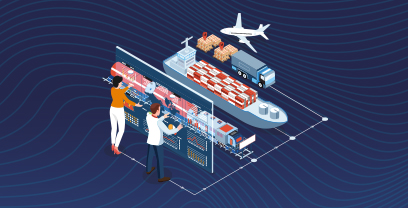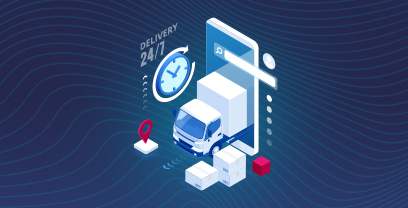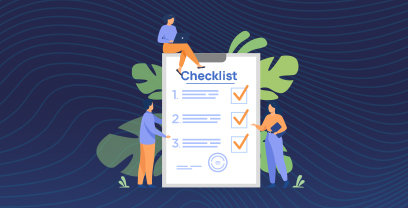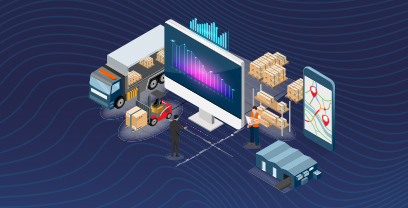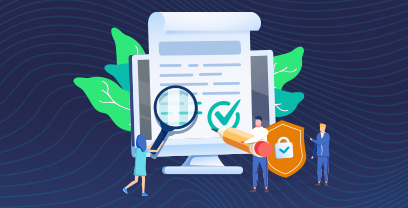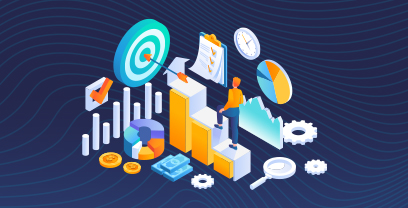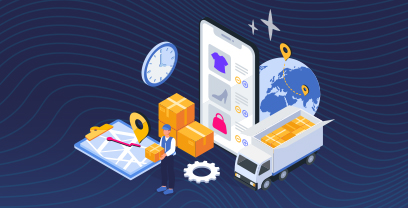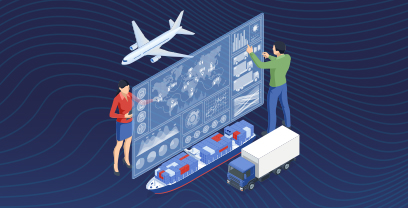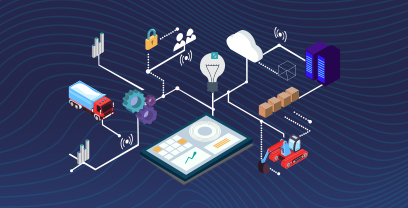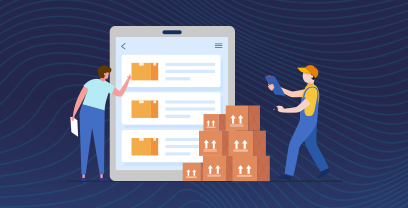Introduction
Your supply chain is only as strong as your weakest supplier connection. And when onboarding is slow, communication is fragmented, or key systems aren’t aligned, that weakness turns into risk. That’s why supplier enablement has become a top priority for procurement and supply chain leaders looking to boost efficiency, compliance, and supplier performance.
When done right, supplier enablement streamlines onboarding, accelerates e-invoicing, and strengthens supplier relationships at scale. In this blog, we’ll explore what supplier enablement really means, why it matters, and how leading organizations are leveraging technology to turn supplier engagement into a competitive advantage.
Key Takeaways
- Supplier enablement empowers suppliers to fully participate in digital procurement processes, improving efficiency, accuracy, and collaboration across the supply chain.
- Effective supplier enablement strategies reduce manual effort, lower costs, and enhance visibility. It helps companies accelerate supplier onboarding, comply with regulations and perform better supplier relationship management.
- Tools like Ivalua’s supplier management solutions centralize communication, automate workflows, and help businesses scale their supplier ecosystem while maintaining agility and control.
What is Supplier Enablement?
Supplier enablement is the process of onboarding and empowering suppliers to participate in a buyer’s procurement or supply chain activities, ensuring effective participation and contribution from all stakeholders.
Adoption of digital tools such as supplier portals, electronic data interchange (EDI), and automated routine processes strengthens communication, procurement, e-invoicing, and payment processes. As a result, suppliers are equipped to actively engage and collaborate with organizations and ensure compliance within the intricate framework of supply chain operations.
Why Is Supplier Enablement Important?
Consider this scenario: To enhance back-end efficiency in supplier transactions and payments, an organization implements invoice automation software. From there on out, supplier management software handles invoice receipt and capture, invoice approval workflows, payment scheduling, payment execution, reconciliation of payments with invoices, and reporting on payment status and metrics. The organization then spends less time and fewer resources on payment procedures and manual tasks related to invoicing, payments, and reconciliation.
While supplier payment enablement is only one facet of supplier enablement, this example illustrates just how powerful it can be. Supplier enablement allows organizations to participate in electronic transactions and collaborate seamlessly with suppliers, including integrating their systems and facilitating the exchange of information in real-time.
Without effective supplier enablement, firms are exposed to risks stemming from inefficiencies, increased errors, heightened costs, and poor supplier relationships. Moreover, organizations lose out on a plethora of benefits.
What Are the Benefits of Supplier Enablement?
Effective supplier enablement can lead to cost savings, improved supplier relationships, and increased efficiency. In addition to the benefits of introducing e-invoicing and automating routine processes as described above, supplier enablement can enhance spend visibility and control over the procurement process – something that a lot of organizations struggle with.
Use of supplier collaboration software to support supplier enablement also standardizes communication between suppliers and buyers by handling onboarding, deployment, updates and support.
Through implementing a robust supplier enablement strategy, organizations can gain insight into sub-tier suppliers, catch invoicing issues or make inventory optimizations, and manage supplier relationships. This results in the ability to eliminate errors, reduce costs, and decrease fulfillment times, improving ROI across the board.
Read Ivalua’s other SLM resource blog: Supplier Lifecycle Management (SLM) Explained.
What Are the 5 Steps to Implement Supplier Enablement?
While the benefits of supplier enablement are fairly straightforward, actually implementing it may seem anything but, especially when you consider how to handle existing suppliers. Successful supplier enablement requires a thoughtful approach based on strategies that address objectives, timelines, and resources required for migrating suppliers to an electronic system.
Leveraging Source-to-Pay (S2P) solutions can significantly enhance implementation by facilitating seamless communication, improving data accuracy, and optimizing workflow efficiency. Whether starting from scratch or using S2P solutions to guide your approach, implementing supplier enablement typically follows these steps:
- Discovery: Conduct a thorough assessment to identify supplier capabilities, technological readiness, and barriers to adoption. Tailor the enablement approach by gathering insights into suppliers’ preferences, systems, and integration capabilities.
- Segment suppliers and enablement channels: Categorize suppliers based on strategic importance, goods or services being provided, risk profile, compliance requirements , as well as other factors such as technological maturity. This helps to determine the most suitable onboarding and enablement channels including such channels such as EDI, supplier portals, or other electronic communication methods.
- Develop project plan and priorities: Create a detailed project plan that outlines key milestones, timelines, and resource allocations for supplier enablement initiatives. Prioritize suppliers based on their segmentation like strategic importance and potential impact on procurement processes.
- Communicate effectively: Establish clear and consistent expectations and communication channels to engage suppliers throughout the enablement process. Provide transparent guidance on the benefits of electronic integration, address concerns, and offer training and support to enable a smooth transition and rapid adoption of new technologies.
- Monitor progress: Track and monitor the progress of supplier enablement initiatives to identify issues or bottlenecks early on and implement corrective measures. Utilize performance metrics to assess effectiveness and ensure alignment with objectives, and regularly engage with suppliers to gather feedback and address needs.
When done right, implementing supplier enablement benefits more than just the bottom line – suppliers and organizations alike enjoy improved outcomes in the form of collaborative relationships,continuous improvement based on current data, and reduced manual effort.
To start implementing supplier enablement, download this Supplier Risk and Performance Management Checklist, which can help to ensure everything is done right from the get-go.
How Can a Supplier Enablement Tool Help You?
There are many supplier management solutions out there, but few cover all the pain points. Supplier management software offers robust supplier onboarding capabilities, enabling the seamless integration of new suppliers, electronic data interchange (EDI) capabilities, and supplier portals for real-time access to transactional information and performance metrics.
Additionally, the most effective enablement solutions have advanced analytics and reporting functionality to provide valuable insights into supplier performance management, risks, and areas for improvement.
Businesses should seek out a holistic supplier management approach to maximize benefits and maintain a competitive advantage. Scalability, security, ease of use, and integration capabilities should all be on the radar when weighing supplier management options.
Scalability is critical to accommodate future growth and evolving business requirements, while robust security measures are essential to safeguard sensitive data and protect against cyber threats. Software should also be user-friendly to ease adoption by employees and suppliers alike.
Finally, integration capabilities are crucial for connectivity with existing systems and processes, ensuring smooth interoperability and data exchange. Holistic supplier enablement is not easy to achieve, especially when you take into consideration the partner collaboration needed to make an organization truly stand out.
Learn more about Ivalua’s supplier management solutions to address both the tech and the human side.
Achieving Supplier Enablement and Collaboration With Supplier Portals
We know that relationships with suppliers can be “make or break” for a business’s operations. Poor relationships can lead to mistrust, long fulfillment times, and even contractual disputes. That’s why it’s more important than ever to foster strong relationships from the start!
Supplier portals are the epitome of technology-enabled collaboration and, by extension, a robust supplier enablement strategy. Unlike supplier networks, tailored supplier portals promote direct communication between buyers and suppliers within a dedicated environment.
When onboarding a supplier, organizations can build a unique and controlled environment tailored to the needs of the buyer-supplier relationship, fostering direct communication and collaboration.
Suppliers can receive and acknowledge purchase orders, send advanced shipping notices (ASNs), and assign invoices with minimal effort. Meanwhile, buyers enjoy speedier procurement cycles, avoid managing multiple systems, and, for high-volume or key suppliers, achieve faster ROI. Best of all, all parties can rest easy knowing their data is fully secure and that they’re surpassing market standards in supplier management.
Ivalua’s supplier portal is a single place to manage all supplier activities & supplier information. Suppliers can onboard quickly – often in minutes – and start collaborating with buyers from day one.
Organizations can trigger vendors to self-register through preferred channels: email invites, order notifications, or RFIs, among others.
Even the supplier invitation process is simple: First, supplier bulk is uploaded to Ivalua. The data is then grouped, deduplicated, and organized by hierarchy. Based on their segmentation, vendors are sent targeted communications that link to the supplier portal. From there, they simply register and are all set!
Home Healthcare Giant Sees Significant Time Savings With Supplier Enhancement
Maxim healthcare is a learning provider of private duty nursing and skilled care in the United States. Last year, they had over 60,000 employees and $1 billion in revenue.
Yet, after seven years with their previous P2P provider, they had only 15% suppliers onboarded, and a whopping 80% of invoices were still being processed manually.
Between their outdated supplier collaboration software with limited automation, non-scalable invoice scanning, and fast growth via M&A, Maxim was unable to manage high volume invoice suppliers and saw numerous invoice approval delays.
Maxim needed a new supplier management software as soon as possible. Luckily, Ivalua’s procurement enablement and invoice-to-pay software was quick to implement. In fact, the entire P2P implementation and go-live process was completed in a record eight weeks.
Since then, Maxim has directly integrated over 100 suppliers and achieved lean team processing of 30,000 invoices per month. Within six months of go-live, e-invoice volumes tripled to support 96% touchless e-invoicing, saving both Maxim and their suppliers countless hours of repetitive tasks.
As a result, team members from all sides are free to work on other, more critical tasks to move from simple supplier management to supplier enabled innovation.
“Our users went right into the system with only a few training guides. Our team believes they didn’t even need to use the guides because the system was that easy to navigate. One surprise for us was how easy it was to manage our catalogs. We have more control and flexibility than we had before. We were able to make our own updates without support or additional services.”
– Cindy Seabrease Director of Purchasing and Accounts Payable Maxim Healthcare
To learn about additional outcomes Maxim achieved by switching to Ivalua’s procurement and e-invoicing software, read the full Maxim case study.
Enable Your Suppliers to Automate & Collaborate With Ivalua
Supplier management software offers businesses significant benefits by fostering partner collaboration through providing centralized platforms for communication and data exchange between buyers and suppliers. This, in turn, helps maintain supply alignment, facilitates information sharing, and supports joint planning throughout organizations’ supply chains.
Supplier enablement solutions like Ivalua’s AP automation solutions and Invoice Hub also automate manual tasks like invoice-to-pay processes, PO management, and payment reconciliation directly from master data. Better yet, Ivalua’s solution can enroll suppliers in real time, includes EDI capabilities, and handles Government Clearance Network integration for seamless tax compliance.
For suppliers that still opt to use paper invoices, image and PDF OCR can convert them into electronic invoices in seconds. Combined with self validation, self-matching, and payment data available to suppliers, Ivalua’s Invoice Hub capabilities eliminate barriers to onboarding and help relationships with suppliers thrive.
Conclusion
Supplier enablement can automate menial procurement tasks, reduce errors and costs, and enhance visibility in all levels of an organization’s supply chain. Businesses with top-tier vendor enablement strategies enjoy improved relationships with all of their suppliers and the ability to free up people and resources to focus on other key business objectives.
However, supplier enablement is only one component of modernizing your supplier management process. Organizations would be remiss to overlook aspects such as supplier risk management, contract management, and spend analysis when searching for supply chain management tools.
Combining supplier management software with Ivalua’s Supply Chain Risk Management suite can give you the best of both worlds – cross-functional collaboration and, ultimately, time and money saved.
Let’s get ready to collaborate! Watch a Demo of Ivalua’s Supplier Management Solutions Here!
FAQs
What are the most common methods for supplier enablement?
Using Supplier portals, electronic data interchange (EDI), and automated onboarding workflows helps to streamline collaboration and transactions. With these tools, suppliers can integrate quickly and comply with requirements, as well as participate in digital procurement processes.
How do I prioritize which suppliers to enable first?
Start with high-volume, strategic, or critical suppliers whose enablement will deliver the greatest impact on efficiency, compliance, or risk reduction. Segment suppliers by spend, category, and technical readiness to guide your rollout plan.
Who owns supplier enablement within a company?
Supplier enablement is usually owned by procurement operations or supply chain teams, often with a dedicated role that’s focused on onboarding suppliers into the company’s Supplier Portal or ERP/EBS system. This person coordinates internal stakeholders and ensures suppliers are successfully integrated into digital processes.
How do I measure success in Supplier Enablement?
Use metrics such as onboarding completion rate, time-to-enable, percentage of electronic transactions, and supplier satisfaction. Long-term indicators may include reduced manual effort, fewer invoice/payment errors, and stronger supplier collaboration.


